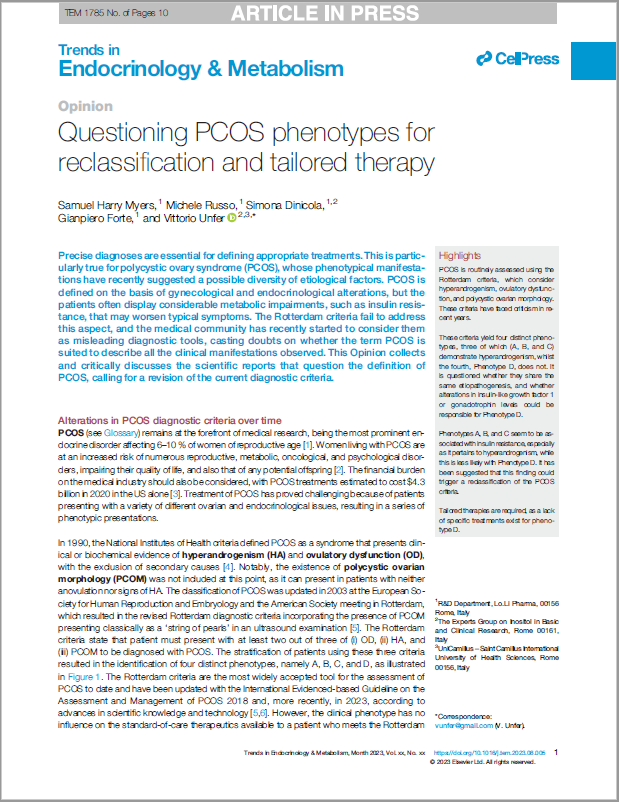Authors:
Samuel Harry Myers, Michele Russo, Simona Dinicola, Gianpiero Forte, Vittorio Unfer
PCOS is routinely assessed using the Rotterdam criteria, which consider hyperandrogenism, ovulatory dysfunction, and polycystic ovarian morphology. These criteria have faced criticism in recent years.
These criteria yield four distinct phenotypes, three of which (A, B, and C) demonstrate hyperandrogenism, whilst the fourth, Phenotype D, does not. It is questioned whether they share the same etiopathogenesis, and whether alterations in insulin-like growth factor 1 or gonadotrophin levels could be responsible for Phenotype D.
Phenotypes A, B, and C seem to be associated with insulin resistance, especially as it pertains to hyperandrogenism, while this is less likely with Phenotype D. It has been suggested that this finding could trigger a reclassification of the PCOS criteria.
Tailored therapies are required, as a lack of specific treatments exist for phenotype D.
Abstract
Precise diagnoses are essential for defining appropriate treatments. This is particularly true for polycystic ovary syndrome (PCOS), whose phenotypical manifestations have recently suggested a possible diversity of etiological factors. PCOS is defined on the basis of gynecological and endocrinological alterations, but the patients often display considerable metabolic impairments, such as insulin resistance, that may worsen typical symptoms. The Rotterdam criteria fail to address this aspect, and the medical community has recently started to consider them as misleading diagnostic tools, casting doubts on whether the term PCOS is suited to describe all the clinical manifestations observed. This Opinion collects and critically discusses the scientific reports that question the definition of PCOS, calling for a revision of the current diagnostic criteria.
